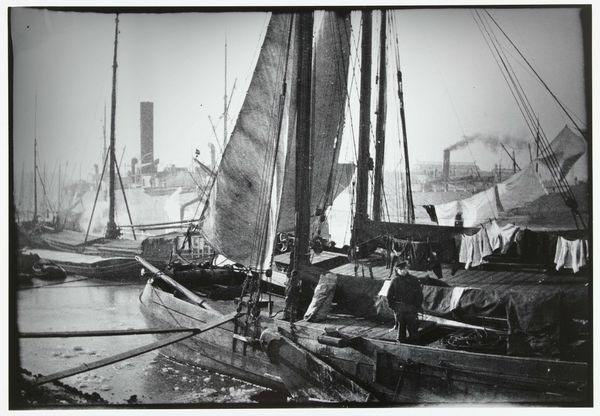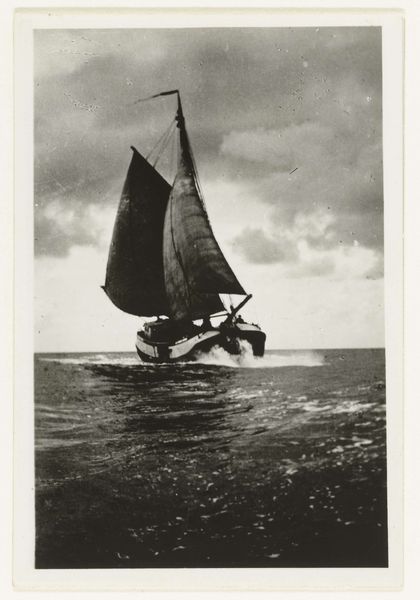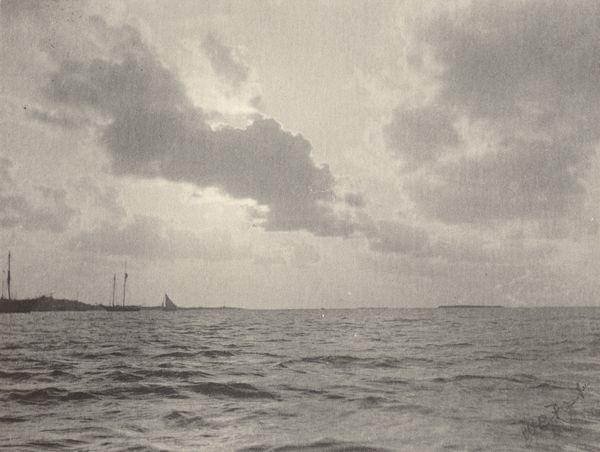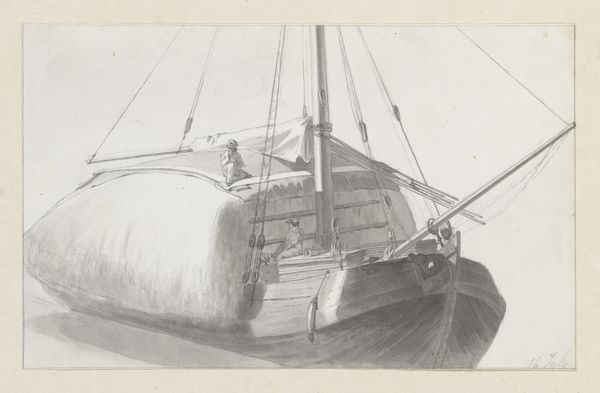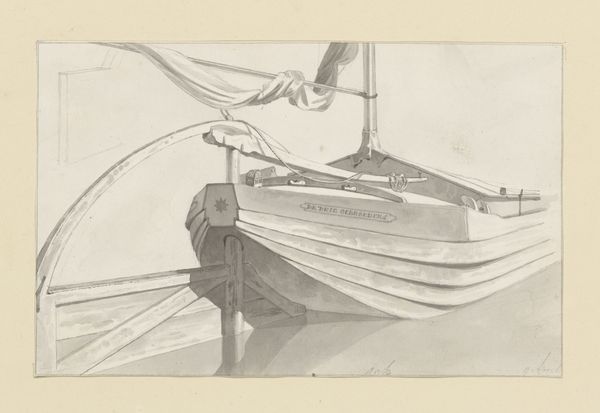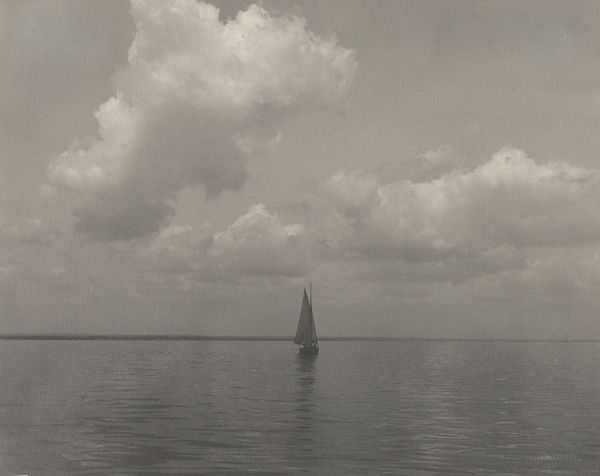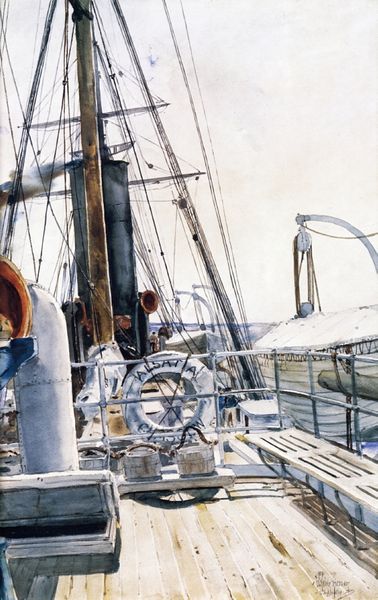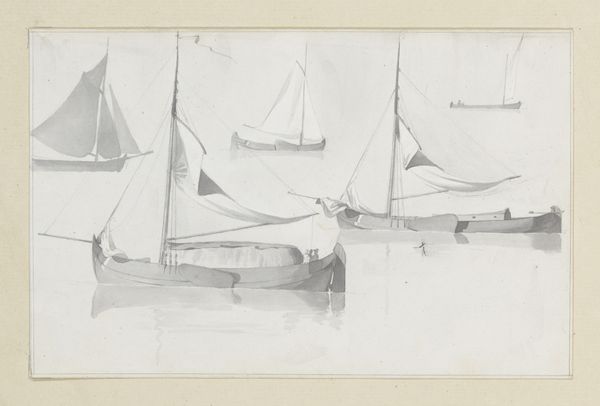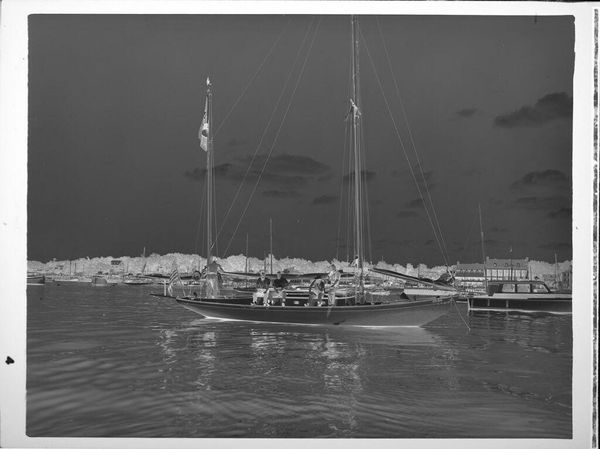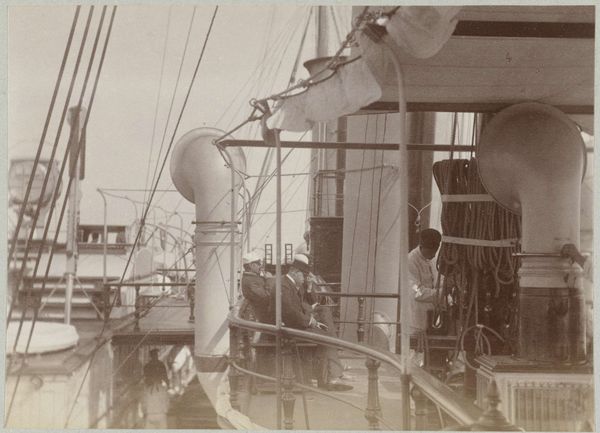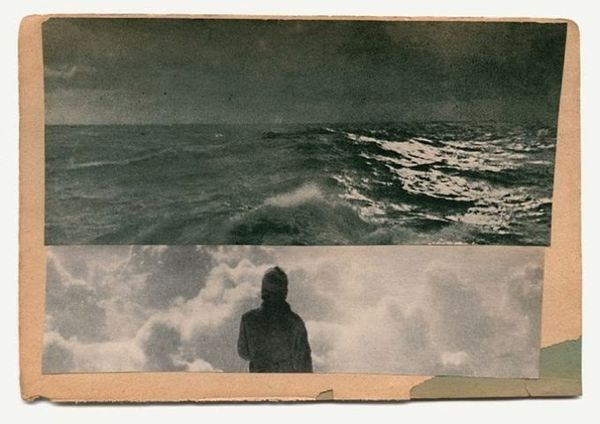
photography, gelatin-silver-print
#
ship
#
nature photography
#
landscape
#
nature
#
photography
#
outdoor scenery
#
photojournalism
#
gelatin-silver-print
#
monochrome photography
#
realism
#
monochrome
Copyright: Public Domain
Curator: This gelatin-silver print, titled "Untitled (Documentation of Deep-Sea Fishing)," comes to us from the late 1930s, specifically 1937-1938. It is believed to be the work of Karl Theodor Gremmler, and resides here at the Städel Museum. Editor: My goodness, it’s quite dramatic! The immediate impression is one of raw power, almost a chaotic, visceral scene of nature's overwhelming force meeting the stark geometry of the ship. The limited grayscale palette adds to that drama. Curator: Absolutely. Gremmler seems less interested in capturing picturesque beauty and more in portraying the actual labor and industrial process of deep-sea fishing, which would have been a significant industry at the time, with many human beings relying on it to make a living. One could see this as early photojournalism with landscape elements. The ship, then, isn’t merely a vessel, but a site of labor, of intense and precarious activity. Editor: Indeed, it's very far removed from Romantic ideals of the sea. The symbolism of the churning ocean is palpable – the unpredictable nature of life, the constant struggle against unseen forces. Even the monochrome palette carries connotations of loss, endurance, and the stripping away of all that's unnecessary. One might even extend that analysis and examine how the cross shape of the boat is like other symbols found around this time… Curator: But consider the process behind capturing such a shot! The photographer exposed themselves to these very same harsh conditions. To do so, that very gelatin-silver print then becomes a vital historical document recording an important, yet arduous aspect of working-class labor during the 1930s. Every part that went into this photo signifies a part of this reality. Editor: I can appreciate your interpretation through material means and labor; my perspective sees the value in the photo’s capacity to transmit emotions beyond that scope: its exploration of mankind's connection to something older, larger, and ultimately more profound. It depicts nature as beautiful but formidable at once; an entity in opposition to material processes. Curator: In seeing that balance, it certainly complicates an easy understanding of this artwork and reminds us of how labor intersects our natural surroundings, then and today. Editor: Precisely, perhaps then this work serves as an emblem of a more sustained cultural narrative about human endeavor, challenge, and survival.
Comments
stadelmuseum about 2 years ago
⋮
Karl Theodor Gremmler belonged to the generation that embarked on their careers after the National Socialist accession to power. He specialized in photos of industrial food production. His customers included the biscuit manufacturer Bahlsen, “Kaffee HAG”, and above all the Hochseefischerei- Gesellschaft Hamburg, Andersen & Co. K. G. Gremmler photographed the products’ entire process chain from the harvest or catch to the packaging. The photo book Men at the Net, published in 1939 on his own initiative, is a detailed portrayal of navigation and fishing. With the aid of harsh shadows, oblique perspectives, and views from below, his scenes of workers in heroic poses were meant to convey the progressiveness of the German food industry. The design principles served the purposes of Nazi propaganda, which generously sponsored advertising measures of this kind.
Join the conversation
Join millions of artists and users on Artera today and experience the ultimate creative platform.

